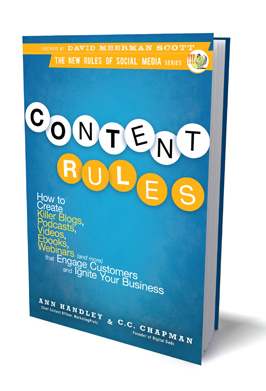Hopefully, you've made it to your local supplement store, and you're well equipped to stay healthy as we head into the holiday season (see last week's discussion if you're confused on this). Enough of the fun stuff–now it's back to work!
Last week I ran across an article written by Peter Weddle that I found profoundly insightful. I reference Peter's work from time to time not only because his observations are instructive, but also because his viewpoints are based on the broader recruiting industry (not just the real estate industry).
In this article, he weighs in on the impact that social networking has had and will have on the recruiting industry. I don't want to spoil his writing by chopping up what he wrote. So, I am going to republish the entire article below and then draw some conclusions for real estate recruiting in our next discussion.
So, here you go:
Post Social Recruiting, by Peter Weddle
"For the
past five years, social recruiting has primarily been implemented in two ways:
data mining pools of talent and networking with prospective candidates at
social media sites. While such techniques will continue to be important, the
thrust of social recruiting in the future will shift to a far different kind of
activity: building and leveraging individual allegiance at employer and
staffing firm sites. It's the next phase in the War for Talent – the era of
post-social recruiting.The
current incarnation of social recruiting has been stimulated and structured by
social media sites. The way we socialize with candidates is governed by the
format, functionality and focus of LinkedIn, Facebook and Twitter. These sites
enable us to promote our brands, advertise to and connect with large pools of
professionals in a wide range of industries.These
interactions have effectively defined social recruiting as a fleeting and
thoroughly functional relationship. Basically, we're saying to prospects:
"Hey, we're a buyer of talent, you're a seller of talent, let's do a
deal." While it isn't the most alluring of propositions, the fact that it
is aimed at a cohort of the workforce not easily reached by other media –
so-called passive job seekers – has made it an important addition to our
recruiting capabilities.The word
"social," however, means something very different from fleeting and
functional relationships. Dictionary.com defines the term as "pertaining
to, devoted to, or characterized by friendly companionship or relations: a
social club." Translated for our purposes, it is the creation and
ongoing development of individual allegiance.That's post-social, at
least as we have to this point understood social recruiting, but truly social
if we intend to use social technology on a large enough scale to address more
than one-off requirements.Post-social
recruiting means interactions with prospects, candidates and applicants that
make them feel at home with and thus committed to an organization. It gives
employers and staffing firms a way to forge an enduring bond – a psychological
rather than simply an electronic connection – with select talent populations.Why is it
the future of social recruiting? Because of the past. In the early 1990s,
economic conditions and competition forced employers to change the way they
dealt with employees. They could no longer afford the expensive overhead of
managing workers' careers, so they jettisoned both the career ladder and the
gold watch. They still employed those workers, of course, but each person was
on their own when it came to managing their career.In the
two decades since then, individual workers have had no place to hang their
career hat. No homestead where they can get the practical and psychological
support they need and deserve. Professional societies and associations have
long served that purpose for a person's field of work, but nothing has existed
for a person's career.And now,
the potential exists to correct that situation and, in the process, create a
formidable, new talent acquisition strategy. Post-social recruiting involves
using social technology to create true career communities – not today's posers
that are actually databases of candidates – without the expensive overhead of
traditional corporate career support. These virtual "careersteads"
nurture allegiance among talented workers and that bond, in turn, transforms
them into genuine employment prospects.Careersteading
for Talent. A
post-social community is not a network of active or passive job seekers. It is
not a one-off interaction based on a specific opening. Rather, a careerstead is
an ongoing relationship that employers and staffing firms establish with
prospects (i.e., people who haven't even expressed an interest in working for
an organization) as well as with candidates and applicants.Its
purpose is not near term sourcing, but rather, long term interactions that help
to promote the career success of those who participate. That effort, in turn,
develops and sustains individual allegiance, and it's that bond which generates
recruiting benefits. These benefits include:1. A
heightened viral effect, because those who participate feel safe and supported enough to tell
their peers about the community. The allegiance community members feel toward
the organization encourages them to champion participation in it to others in
their field.2. A
heightened employment propensity, because those who participate feel as if the organization
has their best interests at heart. The allegiance of community members
encourages them to work for the organization as many times as possible
throughout their career. In effect, a careerstead is a highly
focused, self-sustaining talent generator that exclusively serves the
recruiting interests of a single employer or staffing firm.How do you
create such a community? Not with questions and answers on a Facebook page.
And, not with job postings in a LinkedIn group or on Twitter feed. No, the only
way to establish a true careerstead – one that scales the power of social
technology to address all or most of an organization's talent requirements – is
by breaking all the rules we've learned to date about social recruiting. I'll
talk more about that in my next column.
Stay tuned for part two of this discussion. If you have some thoughts you'd like to share now, you can join us in the Tidemark Online Community (TMOC) discussion group.
Join the WorkPuzzle Discussion at the Tidemark Online Community (TMOC)
Engage in the WorkPuzzle discussion by joining the TMOC private social network. Commenting on a public blog like WorkPuzzle can be a little intimidating, so why not join the discussion inside the privacy of the TMOC discussion group?
By joining TMOC, you'll get to see who else is in the group and your comments will only be seen by those whom you trust. Joining TMOC is quick, easy, and free (no kidding…this takes less than 2 minutes). To get started, click here.
Already of a member of TMOC? If so, join the WorkPuzzle Dialog Group by clicking on the WorkPuzzle Group icon on the left side of your TMOC homepage. Questions? Email the WorkPuzzle editor (workpuzzle@hiringcenter.net) and we'll walk through the process.
 Editor's Note: This article was written by Ben Hess. Ben is the Founding Partner and Managing Director of Tidemark, Inc. and a regular contributor to WorkPuzzle.
Editor's Note: This article was written by Ben Hess. Ben is the Founding Partner and Managing Director of Tidemark, Inc. and a regular contributor to WorkPuzzle.











